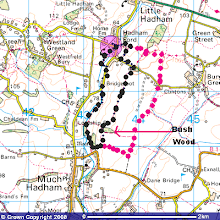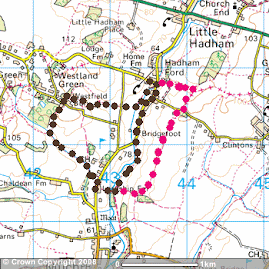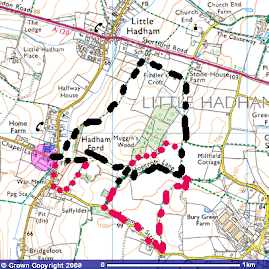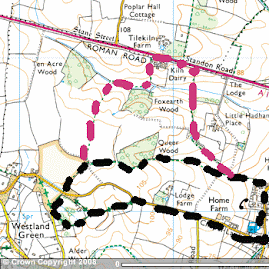April:
As things moved into April it remained cold and wet. I was now quite concerned for moth and butterfly numbers as they had been dwindling for the previous 2 years and another late frost, plenty of cold and rain, would have proved very difficult for them to build up numbers. However, by mid July my concerns were no longer relevant as we had a good summer. However, numbers of spring moths remained low and it will be interesting to see how numbers manage this coming spring.
My first good moth of the month was taken on the 9th, this splendid oak beauty. By far and away the most striking of spring moths.
The following day (the 10th) I spent time at Wilstone reservior, near Tring before heading off to give an illustrated talk on the Birds of The Camargue at Watford. Here, in probably the best light of the year, I caught up with the wildfowl that prevails here. This splendidly plumaged teal being a good example. Also, another grey wagtail.
In the garden moth trap quaker numbers were increasing, with both common and small being taken. Here, a selection with the small quaker disappearing out of shot, stage left. The other 4 being common quakers.
The following morning a visit to the trap gave views of a new moth for garden records, a twin spot quaker, as well as 1st for the year, a satellite. Latter named after the two dots that are around the larger white markings, rather like a satellite around a planet.
On the 14th of the month I organised the first village dawn chorus walk of the year. 7 of us met at 5a.m. at the village hall and had a wander that took in several good habitats for song birds. In all, some 6 miles. A glorious sunrise awaited as I recorded the first blackcap of the year as well as this showy yellowhammer. In all we saw and/or heard some 33 species.
During this period I had been putting in a small garden pond and, on wandering down to the moth trap on the morning of the 16th I was most pleased to find a toad had moved in. My first record of such within the parish, so most welcome. Hopefully, it cleared up plenty of slugs before moving off as no mate ever turned up. A good record for the garden.
On the 19th, I picked up mates Gary and Dave for a whole day in North Norfolk. This turned into a sensational trip, with precisely 100 bird species recorded for the day and it added 12 year listers to my tally. Plenty of photos taken in great weather. Here, a water rail, pair of avocets and spotted redshank, all at Titchwell RSPB Reserve. We bagged the 100th bird near Fakenham on the journey home; a red kite.
May:
The first few days found me in The Algarve, firstly in Tavira and then on Lagos, with a day visit up to the Baixo Alentejo region. Here, the birding was magnificent, with much seen, including roller, black vulture, griffon vulture, lesser kestrel, black bellied sandgrouse, little and greater bustard and iberian grey shrike. Other noteworthy birds were montagu's harrier, golden oriole, black winged kite and greater spotted cuckoo.
 |
| The end of a trusted old hat, blown into the Atlantic! |
 |
| serin |
 |
| white stork |
 |
| Iberian Grey Shrike |
 |
| roller |
 |
| black vulture |
Back in Little Hadham, May continued to be unseasonably wet, which meant alarm bells were ringing re moth and butterfly numbers. On too many occasions, the garden trap was a wash out and numbers were dreadfully low.
However, as spring was in full flow, I decided on a plant survey wander. I find it difficult to bird and plant watch at the same time and so, on the 10th, I left my binoculars at home so as to concentrate on plants. As it was, I found nothing new but good numbers of the regular May plants, such as greater stitchwort, red campion, bluebell and cowslips. Also, ground ivy and white deadnettle were in flower. Greater stitchwort and cowslip shown here.
On the 18th, I made my first visit of the year to Amwell Reserve, some 8 miles south of the village. Always a good bird spot at any time of the year. On this occasion I ticked common tern (below) and little ringed plover as well as saw good numbers of regular waterfowl.
A drier morning on the 21st brought a few new for year moths to the trap, including this brimstone and poplar hawkmoth, but numbers still disappointing. Also in the trap, as they always are in mid May onwards, a superb cock chafer, shown here. Whilst looking fairly fearsome, they just make a lot of noise as they career around in what appears to be a display of very unorganised flight. I found one outside the local pub one evening around this time of year and took it in to show customers. The barmaid was considerably less than impressed as it escaped and battered around the pub for most of the evening, until re caught and thrown out.
A wander around the village for newly arrived migrants gave up whitethroats, a singing lesser whitethroat, garden warbler, 5 chiffchaffs and this blackcap. What was most noticeable was the complete lack of willow warblers. Their numbers in Hertfordshire seemed to have dropped markedly within the last 4 years. Maybe they are just migrating further north?
A walk through some local woods on the 28th gave views of a new plant for my village records, this early purple orchid. It was found in typical habitat, on the edge of a path through a well established deciduous wood and, upon mentioning it in my monthly natural history diary in the parish magazine, I was informed that they have been present at that spot for years. Something I shall check on next year, as a good plant to find locally.
Eventually, as the days began to both warm up and become drier, I managed to start recording butterflies. This female orange tip visiting a greater stitchwort was one of many of this species. The other oft noted species was the speckled wood.
As an indication of the drop in moth numbers during the spring of 2013, it is worth comparing to 2012. In that year I had recorded 84 species of moth by the end of May. In 2013 it was a paltry 36! Many moths just didn't appear and so it will need a good spring in 2014 to help get their numbers back up. Just a question of wait and see.
June:
At last, June brought some most welcome warm days, t shirts and shorts weather and with it, a huge increase in insect flights.
On the 2nd I led a walk to Standon with several villagers. Of particular note was this yellow wagtail, found near Wellpond Green and this muntjac, on the green and Westland Green.
The following day I took myself off to RSPB Lakenheath Reserve, whre I bumped into a real rarity, a savi's warbler. Also present were golden oriole, bittern, reed and grasshopper warblers. A reed warbler (top) and whitethroat shown here.
Back at home, I had several good moth nights, with some new for year specimens as well as number 259 for the garden in the shape of this tawny shears, taken on the 8th. Other moths here, lime hawkmoth and marbled minor. These are both regular visitors to the trap in June.
On the 13th I took 21 moths of 8 species including this common white wave (top). A couple ofdays later, moth number 260 as a light brocade (below) appeared in the trap, along with over 88 other moths of 16 species. Slowly getting better.
Between the 18th and 25th we were away in Kefalonia. Not an island well known for its bird life, but all the same a wonderful place to visit. I did record a few good birds, such as this woodchat shrike along with other creatures, such as this ionian wall lizard, southern white admiral butterfly and a huge micro moth, the surreptious palm borer. The latter, first seen on the bonnet of a car and then recorded twice elsewhere turned out to be the first record for the island. I suspect there are plenty about, just that no one has contacted the Greek moth recorder!
Finally for this month, the first elephant hawkmoth turned up on the 27th, finishing a reasonably successful mothing month.
July - September to follow sometime over the next few days.

















.JPG)
.JPG)









.JPG)
.JPG)
.JPG)





.JPG)












































No comments:
Post a Comment